Intro
Walking pneumonia, also known as atypical pneumonia, is a type of pneumonia that is typically mild and can be treated with antibiotics. It is called "walking" pneumonia because its symptoms are often mild enough that one can still be walking around and carrying out daily activities, rather than being bedridden. Walking pneumonia is usually caused by the bacteria Mycoplasma pneumoniae, and it is most common in adults under the age of 40.
Walking pneumonia can be spread through respiratory droplets, such as those produced by coughing or sneezing, or by coming into contact with contaminated surfaces. The symptoms of walking pneumonia can vary, but they often include a cough, fever, headache, and fatigue. In some cases, walking pneumonia can also cause sore throat, runny nose, and chest pain. If left untreated, walking pneumonia can lead to more serious complications, such as bronchitis, sinusitis, and ear infections.
It is essential to seek medical attention if symptoms persist or worsen over time. A healthcare professional can diagnose walking pneumonia through a physical examination, medical history, and laboratory tests, such as chest X-rays and blood tests. Early diagnosis and treatment can help prevent complications and promote a speedy recovery. In this article, we will delve into the world of walking pneumonia in adults, exploring its causes, symptoms, diagnosis, treatment, and prevention.
Causes of Walking Pneumonia in Adults
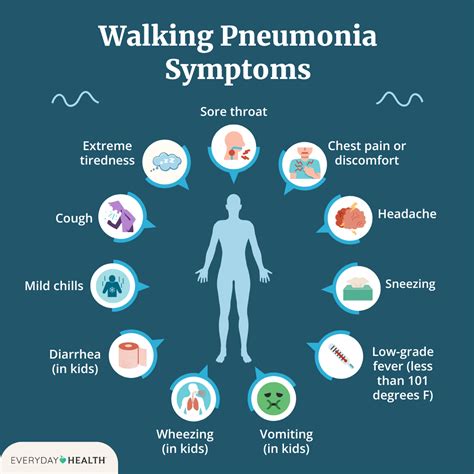
Risk Factors for Walking Pneumonia
Certain risk factors can increase the likelihood of developing walking pneumonia. These include: * Age: Walking pneumonia is most common in adults under the age of 40. * Weakened immune system: People with weakened immune systems, such as those with chronic illnesses or taking immunosuppressive medications, are more susceptible to walking pneumonia. * Close living quarters: Living in close proximity to others, such as in dormitories or military barracks, can increase the risk of transmission. * Poor air quality: Exposure to poor air quality, such as secondhand smoke or pollution, can increase the risk of respiratory infections.Symptoms of Walking Pneumonia in Adults
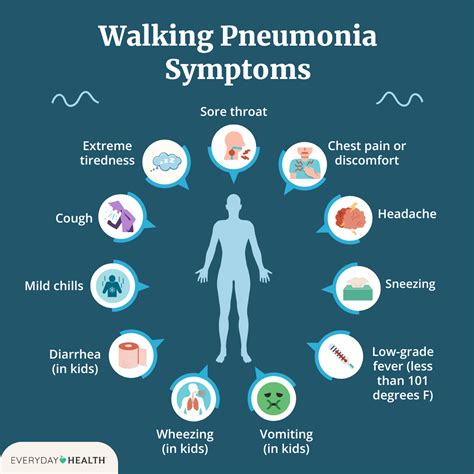
Complications of Walking Pneumonia
If left untreated, walking pneumonia can lead to more serious complications, such as: * Bronchitis: Inflammation of the bronchial tubes can occur. * Sinusitis: Inflammation of the sinuses can occur. * Ear infections: Infections of the middle ear can occur. * Pneumonia: Walking pneumonia can progress to more severe pneumonia if left untreated.Diagnosis of Walking Pneumonia in Adults
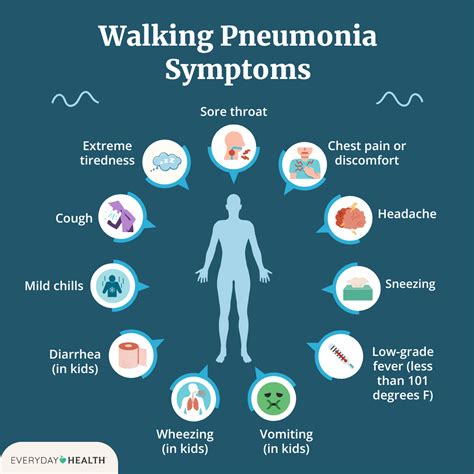
Physical Examination
A physical examination can help diagnose walking pneumonia. The healthcare professional will: * Listen to the lungs with a stethoscope to check for abnormal sounds. * Check for signs of infection, such as fever and cough. * Check for signs of respiratory distress, such as shortness of breath.Treatment of Walking Pneumonia in Adults
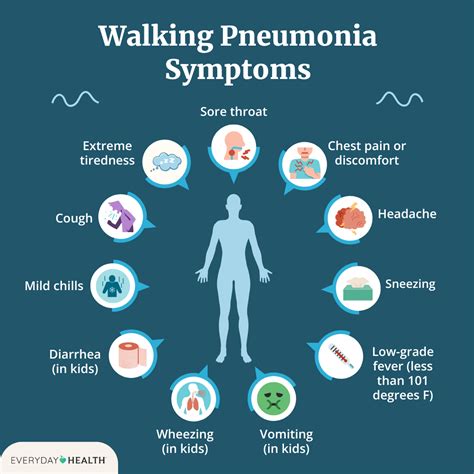
Self-Care Measures
In addition to antibiotics, self-care measures can help manage symptoms and promote recovery. These include: * Resting and avoiding strenuous activities. * Staying hydrated by drinking plenty of fluids. * Using a humidifier to relieve congestion. * Taking over-the-counter medications, such as acetaminophen or ibuprofen, to relieve pain and reduce fever.Prevention of Walking Pneumonia in Adults
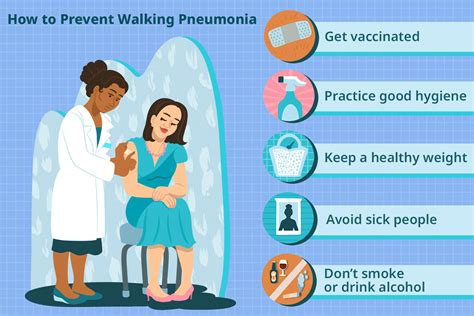
Vaccination
Vaccination can help prevent walking pneumonia. The following vaccines may be recommended: * Pneumococcal conjugate vaccine (PCV) * Pneumococcal polysaccharide vaccine (PPSV) * Haemophilus influenzae type b (Hib) vaccineWhat is the most common cause of walking pneumonia in adults?
+Mycoplasma pneumoniae is the most common cause of walking pneumonia in adults.
How is walking pneumonia diagnosed?
+Walking pneumonia is diagnosed through a physical examination, medical history, and laboratory tests, such as chest X-rays and blood tests.
What are the symptoms of walking pneumonia?
+The symptoms of walking pneumonia include cough, fever, headache, fatigue, sore throat, runny nose, and chest pain.
How is walking pneumonia treated?
+Walking pneumonia is typically treated with antibiotics, such as azithromycin, clarithromycin, doxycycline, and erythromycin.
Can walking pneumonia be prevented?
+Yes, walking pneumonia can be prevented by practicing good hygiene, avoiding close contact with people who are sick, getting plenty of rest, eating a healthy diet, and staying hydrated.
We hope this article has provided you with a comprehensive understanding of walking pneumonia in adults. If you have any further questions or concerns, please do not hesitate to reach out to a healthcare professional. Share this article with friends and family to help spread awareness about walking pneumonia and its prevention.
